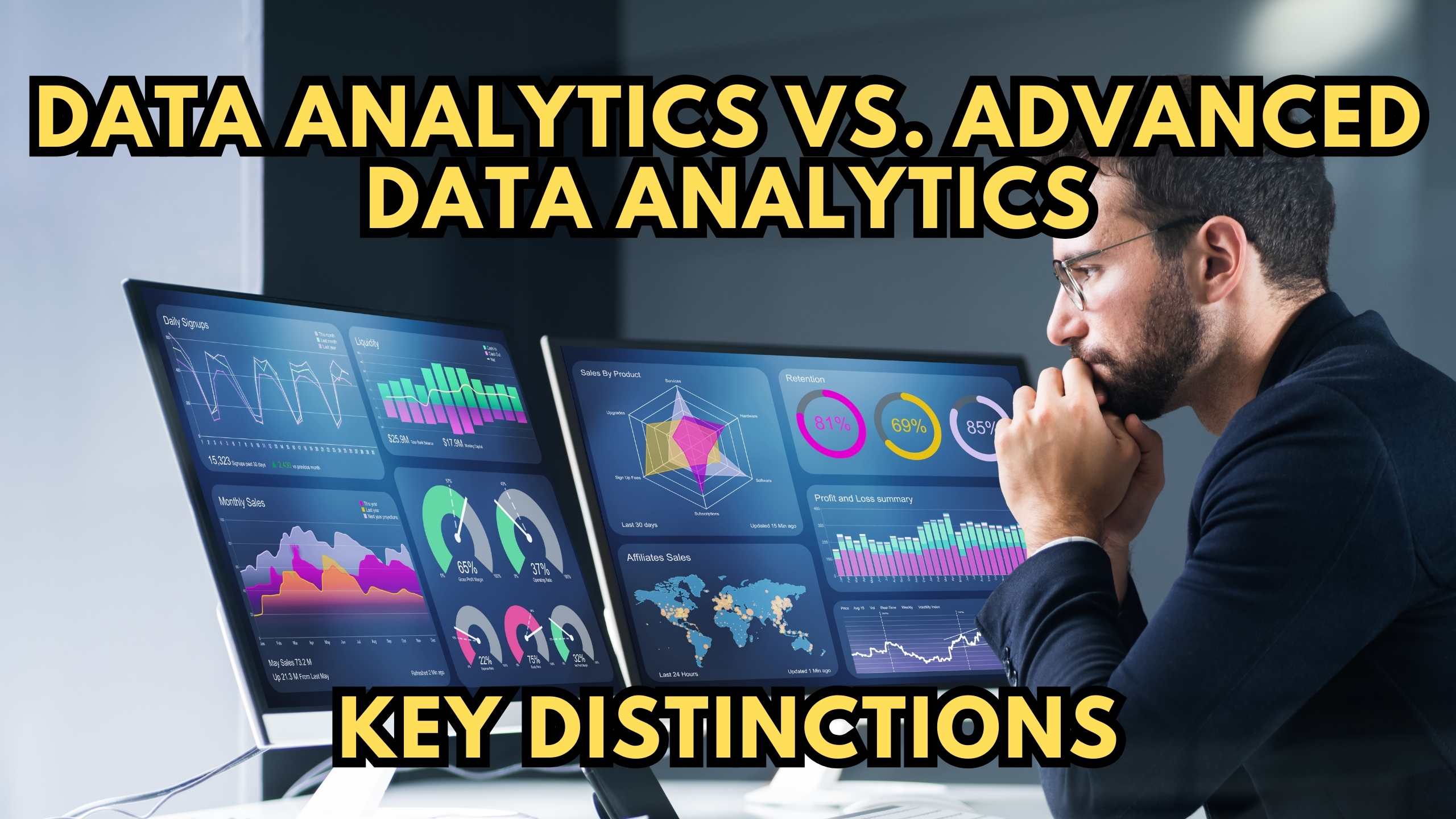Data Analytics vs. Advanced Data Analytics: Key Distinctions
- Data as a Service (DaaS) Software Marketing & Analytics


Data Analytics vs. Advanced Data Analytics: Key Distinctions
In the rapidly evolving landscape of data analytics, understanding the nuances between traditional data analytics and advanced data analytics is crucial for organizations seeking actionable insights. This blog aims to unravel the key distinctions between these two approaches, shedding light on their applications and implications for businesses. Throughout the exploration, we’ll also highlight relevant SaaS products that can elevate your data analytics capabilities.
1. Data Analytics: Unveiling the Foundation
Data analytics involves the examination of raw data to draw conclusions and make informed decisions. It encompasses a range of techniques, including statistical analysis and business intelligence, to extract valuable insights from structured and unstructured data. SaaS tools like Tableau play a pivotal role in this stage, providing intuitive data visualization and analysis to transform raw data into actionable information.
2. Advanced Data Analytics: Elevating Decision-Making
Advanced data analytics takes the process a step further by incorporating sophisticated techniques such as machine learning and predictive modeling. This approach enables organizations to uncover complex patterns, correlations, and trends within their data. DataRobot is a powerful SaaS platform that empowers users with automated machine learning, facilitating the implementation of advanced analytics models without extensive expertise.
3. Distinctions and Applications
The primary distinction lies in the complexity and scope of analysis. While data analytics focuses on historical data and descriptive statistics, advanced data analytics delves into predictive and prescriptive analytics, offering insights into future trends and optimal decision paths. Businesses seeking real-time insights and predictive capabilities often find advanced data analytics more aligned with their needs.
Relevant SaaS Products:
- Tableau: Transform your data into interactive visualizations with Tableau, providing an intuitive platform for in-depth data analysis and reporting.
- DataRobot: Harness the power of automated machine learning with DataRobot, streamlining the implementation of advanced analytics models for predictive insights.
- Looker: Drive data-driven decisions with Looker’s data exploration and business intelligence platform, facilitating a deeper understanding of your analytics.
- Google Analytics: Gain valuable insights into user behavior and website performance with Google Analytics, an essential tool for web analytics.
- Microsoft Power BI: Empower your organization with Microsoft Power BI, offering a comprehensive suite of business analytics tools for data visualization and sharing.
Conclusion
In conclusion, understanding the distinctions between data analytics and advanced data analytics is pivotal for organizations navigating the data-driven landscape. Each approach has its merits, and the choice depends on the specific needs and objectives of the business. To stay ahead in the realm of data analytics, leverage the right SaaS tools that align with your analytical goals.
Supercharge Your Data Analytics with Subscribed.fyi!
Ready to enhance your data analytics capabilities? Subscribed.fyi offers exclusive deals on essential SaaS tools. Sign up for free to unlock secret deals and supercharge your data analytics journey. Empower your organization with the right tools and make data-driven decisions effortlessly.
Relevant Links:





